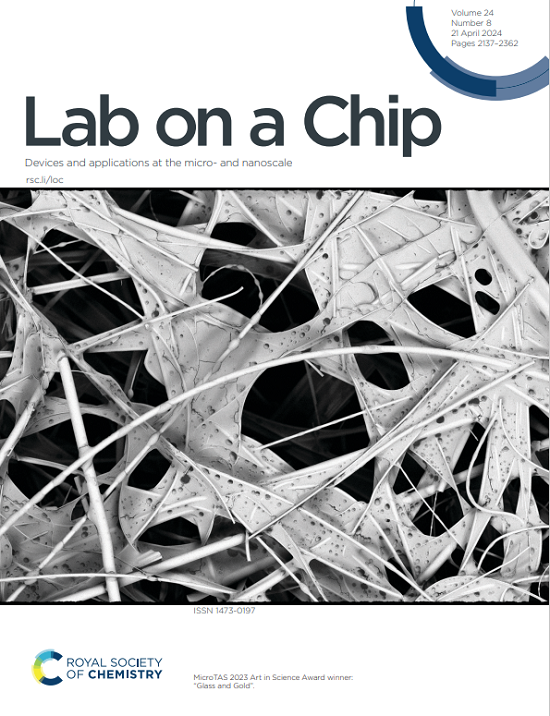Evaluating migration and cytotoxicity of tissue-resident and conventional NK cells in a 3D microphysiological system using live-cell imaging.
IF 6.1
2区 工程技术
Q1 BIOCHEMICAL RESEARCH METHODS
引用次数: 0
Abstract
Natural killer (NK) cells are critical components of the immune response against cancer, recognized for their ability to target and eliminate malignant cells. Among NK cell subsets, intraepithelial ILC1 (ieILC1)-like tissue resident NK (trNK) cells exhibit distinct functional properties and enhanced cytotoxicity compared to conventional NK (cNK) cells, positioning them as promising candidates for cancer immunotherapy. However, the specific roles and mechanisms of these cytotoxic trNK cells within the tumor microenvironment (TME) remain to be further explored. In this study, we utilized a three-dimensional (3D) microphysiological system (MPS) to model the tumor-vascular interface and investigate the distinct capabilities of cytotoxic ieILC1-like trNK and cNK cells within the TME. Through the integration of live-cell imaging and cell-tracking analysis, we quantitatively assessed NK cell migration, tumor infiltration, and cytotoxic activity in real time. Our findings revealed that trNK cells demonstrate enhanced motility, sustained tumor interactions, and superior tumor-killing efficiency compared to cNK cells. This study highlights the unique properties of trNK cells, providing a robust foundation for developing next-generation cancer therapies that harness their potent cytotoxic capabilities.利用活细胞成像技术在三维微生理系统中评估组织常驻NK细胞和常规NK细胞的迁移和细胞毒性。
自然杀伤(NK)细胞是对抗癌症的免疫反应的关键组成部分,以其靶向和消除恶性细胞的能力而闻名。在NK细胞亚群中,上皮内ILC1 (ieILC1)样组织常驻NK (trNK)细胞与常规NK (cNK)细胞相比,表现出独特的功能特性和增强的细胞毒性,使其成为癌症免疫治疗的有希望的候选者。然而,这些细胞毒性trNK细胞在肿瘤微环境(TME)中的具体作用和机制仍有待进一步探讨。在这项研究中,我们利用三维(3D)微生理系统(MPS)来模拟肿瘤-血管界面,并研究细胞毒性ieilc1样trNK和cNK细胞在TME中的独特能力。通过结合活细胞成像和细胞跟踪分析,我们实时定量评估NK细胞迁移、肿瘤浸润和细胞毒活性。我们的研究结果表明,与cNK细胞相比,trNK细胞表现出增强的运动性,持续的肿瘤相互作用和优越的肿瘤杀伤效率。这项研究强调了trNK细胞的独特特性,为开发利用其强大的细胞毒性能力的下一代癌症疗法提供了坚实的基础。
本文章由计算机程序翻译,如有差异,请以英文原文为准。
求助全文
约1分钟内获得全文
求助全文
来源期刊

Lab on a Chip
工程技术-化学综合
CiteScore
11.10
自引率
8.20%
发文量
434
审稿时长
2.6 months
期刊介绍:
Lab on a Chip is the premiere journal that publishes cutting-edge research in the field of miniaturization. By their very nature, microfluidic/nanofluidic/miniaturized systems are at the intersection of disciplines, spanning fundamental research to high-end application, which is reflected by the broad readership of the journal. Lab on a Chip publishes two types of papers on original research: full-length research papers and communications. Papers should demonstrate innovations, which can come from technical advancements or applications addressing pressing needs in globally important areas. The journal also publishes Comments, Reviews, and Perspectives.
 求助内容:
求助内容: 应助结果提醒方式:
应助结果提醒方式:


